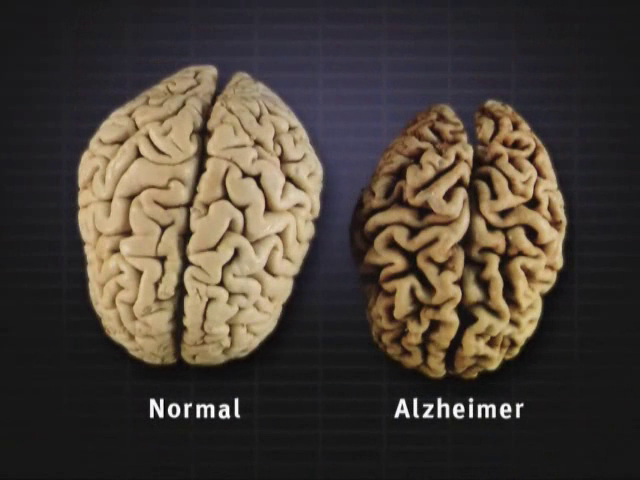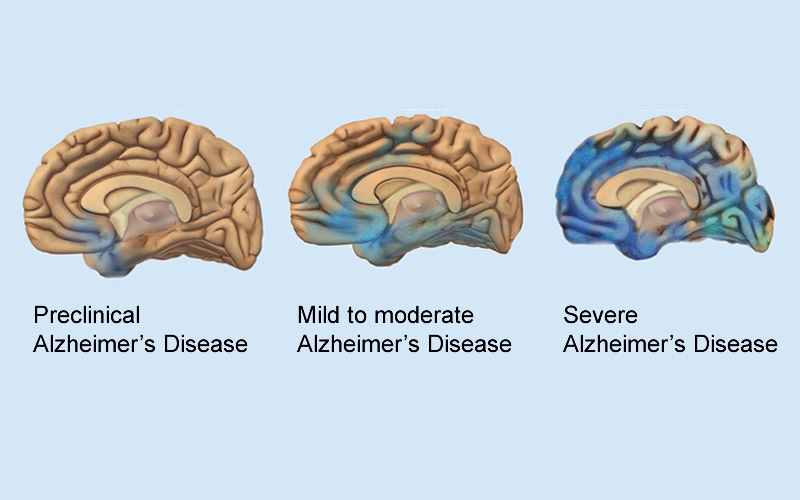With her fingers wrapped around the wheel, and her eyes planted on the road ahead, she kept driving, and driving, and driving. Lamppost after lamppost, traffic light after traffic light, the road kept growing longer, as the surrounding became unfamiliar by the second. She was looking around for signs of familiarity yet found none. She didn’t know if she should turn around the next corner or drive ahead. In her own hometown, she was lost. Confusion clouding up as her mind went blank as if she was drifting away into oblivion.
“Oh, no. It’s happening again!”
What is Alzheimer’s?
Alzheimer’s disease is a neurodegenerative disease, which means it causes degeneration or loss of neurons in the brain, particularly in the cortex. Affected people may suffer from degeneration of various cognitive functions and memory erosion thus is a memory parasite that is powerful enough to make you disremember the person you are and vicious enough to eat away your most euphoric memories. Alzheimer’s is a form of dementia that results in the loss of memories, thinking patterns, and other cognitive abilities up to a level that is worse enough to affect your day-to-day life. It is like a cousin of ‘cancer’, which progressively worsens over time and there is no particular reason why someone would be the chosen one.
A patient would go from losing memories to eventual misfunctioning of their body and ultimately to their death. The life expectancy of an Alzheimer’s patient is 3-9 years. This heartbreaking disease is the most common form of dementia, as it claims to be 60-80% of dementia cases. There are other types of dementia such as Huntington’s disease, Parkinson’s disease, and Creutzfeldt-Jakob disease, and unfortunately, there is a possibility for a person to be diagnosed with more than one type of dementia.
Tale of the Memory Parasite
In 1901, a German psychiatrist, Dr. Alois Alzheimer, was the first to describe the symptoms of Alzheimer’s, thus the origination of the name ‘Alzheimer’s’. Dr. Alzheimer came across a patient, who had difficulty in sleeping, drastic mood changes, and disturbing memory, who eventually passed away without any other display of physical symptoms. He then decided to do an autopsy and observe this patient’s brain tissue under a microscope and discovered abnormalities in the form of misfolded proteins called ‘amyloid plaques’ present between neurons and ‘neurofibrillary tangles’ present within the neurons.
A molecule called Beta-amyloid, derived from a much larger protein belonging to the lipid bilayer of the plasma membrane of a neuron, is the evil magician behind these nasty plaques. Beta-amyloid, being a very chemically adhesive molecule, tends to gradually stick to others like itself to form these deadly plaques, that eventually get in the way of inter-neuronal signaling. Thereby making it extremely hectic for the neurons to carry out their usual role as messengers that transmits information.
Neurofibrils however don’t appear between neurons like the plaques but prefer to make a home within the neurons. Just as any other body cell, neurons require a nutrient source too, and those nutrients and other essential materials are transported to it via a system of specialized filaments called ‘microtubules.’ These microtubules appear as a railway lining, with its pair of rails connected through proteins called ‘tau proteins’. In an Alzheimer’s patient, these tau proteins become abnormal and disaggregate into filaments that tangle up, causing the railway to cease being linear. These railways can no longer transport the train full of nutrients into the neurons, eventually causing degeneration of neurons starting from the end onwards, completely cutting off the communication link transmitting signals.
When comparing the above two images, it is visibly observable that the Alzheimer-affected brain is much smaller in size than a normal brain. It has shrunk to 1/3rd of its original normal brain size. The folds on the brain called gyri are smaller in size, while the spaces among the folds of the brain called sulci are excessively enlarged.
The Birth, Growth, and The Killing
Alzheimer’s disease has its own wicked murderous story, comprising of a very unfortunate beginning, a slow and agonizing middle, and a tragic ending. Thus, Alzheimer’s disease comprises of mild to moderate to severe stages.
- Early-stage – Mild Alzheimer’s Disease
The mild Alzheimer’s stage marks the dawn of the life story of this villain. It does not yet cause any serious damage to the innocent victim, as its famous trick is to attack slow and without a warning. First, it confuses the victim, leisurely erasing his or her memories, while webbing the mind with confusion. This results in short-term memory loss, difficulty recalling names or certain words, trouble in handling money, and being unable to remember what was just read. However, the attack is not grave enough to make him or her unable to function independently. Daily activities such as working, driving, and attending social events are possible yet, with slight memory lapses along the way.
- Middle stage – Moderate Alzheimer’s Disease
At this stage, the villain becomes a little more despicable as its plan of attack is slow and bitter. Alzheimer’s can drag this stage for years; thus, it is the longest stage out of the three. It makes the sufferer face a great challenge even performing ordinary activities such as cooking, driving, working, schooling, or handling money, without guidance. The independence of the victim is gradually dissolved while losing his or her sense of self. They start becoming forgetful of their own personal history and often get lost in their own thoughts. They are unable to recall what day it is, making them feel as if they had just woken up trapped inside a timeless vortex. Sleeping patterns often change resulting in insomnia, and other personality changes such as growing suspicion, becoming delusional with compulsive and repetitive behaviors are experienced by the sufferer.
- Late stage – Severe Alzheimer’s Disease
At the final stage, the villain can almost taste sweet victory and the joy of the victim’s calamity. At this point, if we crack open the skull of the Alzheimer’s infected person, we can observe that the plaques and the neurofibrillary tangles have invaded throughout the brain tissue, resulting in the brain shrinking substantially. The villain grins spitefully at the sight of the victim losing his or her ability to walk, sit, swallow, and carry out other voluntary actions. The affected person can no longer carry out a proper conversation or control their own movements. Constant mood changes including paranoia, anger, depression, aggression, and confusion take over them. The ending of the story is as tragic as the story of cancer, as the sufferer contemplates on their bed, dwelling in oblivion, waiting for their last breath to bless them with peace.
How can you detect Alzheimer’s?
If someone is affected by Alzheimer’s they would become aware that something is wrong with them, however, it is often the friends and family of the affected individual that start to notice certain dementia symptoms, even before the patient themselves.
Doctors conduct various tests on the patient to diagnose Alzheimer’s, these may include cognitive tests to assess memory impairment, mental status testing, Neuropsychological testing, testing their balance and reflexes, blood or urine tests, and brain imaging tests such as MRI or CT scans. Brain imaging could be done, but it is not enough to make the diagnosis, as certain visible changes in the brain could be due to aging as well. However, brain imaging does help in ruling out any other possible diseases such as brain tumours, haemorrhages, or strokes. Interviews with the patient’s friends, family, or caregiver might be done by the doctor to check for any changes in cognitive skills, personality changes, and other functional abilities. Alzheimer’s could be due to genetic or environmental factors, thus testing for related genes at early stages could depict the development of such a condition.
The scary part is that the patients may be able to hide this disease quite skilfully, especially if they are witty. They might often think that the unexplainable memory lapses, confusion, and mood changes may be due to stress, depression, or any other mental issue. They might even find ways to pass the initial memory and cognitive tests without displaying any proper symptoms of Alzheimer’s, but by the time they realize the true cause of the symptoms, it might be too late.
“Perseverance” is the cure
Persevering through the whole Alzheimer journey, while accepting it and enduring the pain, is the cure since there is no actual cure uncovered for this fatal disease even though it was discovered over a century ago. Reversing the death of brain cells is impossible to achieve unless we could travel back in time through a time machine. Although there is no cure, early diagnosis can be beneficial, as doctors could prescribe drug and non-drug interventions to ease the burden of Alzheimer’s and improve neural communication across the brain which would eventually slow down the progress of Alzheimer’s.
Alzheimer’s really tests an individual’s mental strength and capabilities, as one could easily give up on life during the initial stages while another could persevere and fight the disease. Families of affected people go through a lot as well, having to adjust to the new normal. Imagine having your whole house labeled from top to bottom, so that they wouldn’t mistakenly put the washing powder in the fridge.
Significance of Alzheimer’s Day
In 2012, an international campaign was launched in honour of Alzheimer’s and in the current year, 2021, we celebrate the 10th world Alzheimer’s month. Approximately 2 out of 3 people, globally, are unaware of Alzheimer’s disease and other associated forms of dementia. This is a serious issue as it is a disease that is very much likely to mask itself behind symptoms of stress and other unserious mental issues. The risk of Alzheimer’s tends to increase with age, especially after the age of 65. Another risk factor may be having a family history of Alzheimer’s or carrying certain related genes.
According to the most recent data released by WHO (World Health Organization), Alzheimer’s and dementia deaths in Sri Lanka reached 6.22% of total deaths. This is a serious issue in Sri Lanka and worldwide. Nobody would know the harshness of it until they or their loved ones are gobbled up by this malevolent monster. Imagine being born, living your life to the fullest, just to forget everything, including the mere people that kept you alive. You will no longer remember; you will no longer love.
So let us spread awareness about Alzheimer’s as much as possible while educating ourselves and our loved ones. Getting plenty of regular exercises, followed by a healthy diet, while maintaining a healthy cardiovascular system are coined as factors that would help prevent Alzheimer’s. Even though there is no cure, every Alzheimer-affected person’s story does not have to be a tragic one. They are immensely strong for enduring such calamity, never giving up, and fighting till the very end. If you personally know of anyone going through Alzheimer’s, bear with them, be gentle, be kind, be patient, and most importantly remind them that they are loved.
Nobody truly knows what another person is going through, sometimes not even themselves. Therefore, let us all be empathetic and forever kind to every stranger that we cross paths with, in our very short and temporary life.
Image courtesies:
- Featured Image: https://bit.ly/3lVmQcj
- Content Image 1: https://bit.ly/3zo1A3i
- Content Image 2: https://bit.ly/3kni0VB
- Content Image 3: https://bit.ly/3CsdQln
- Content Image 4: https://bit.ly/2ZdYORZ
References:
- https://www.medicalnewstoday.com/articles/159442
- https://www.news-medical.net/health/Alzheimers-Disease-Definition-Causes-Diagnosis-Treatment.aspx
- https://www.mayoclinic.org/diseases-conditions/alzheimers-disease/in-depth/alzheimers/art-20048075
- https://www.alz.org/alzheimers-dementia/what-is-alzheimers





